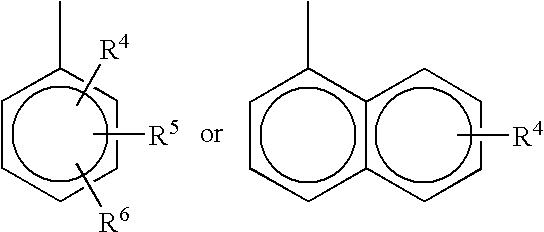Development of radiation-sensitive elements
a technology of radiation-sensitive elements and compositions, applied in the field of development of radiation-sensitive elements, can solve the problems of inability to know the extent of contamination of external parts or personnel immediately, the properties of such a developer will be less than ideal, and the development process is not easy to achieve. , to achieve the effect of preventing corrosion of the substrate, facilitating the removal of image colorants and polymers, and moderated the aggressiveness of the developer
- Summary
- Abstract
- Description
- Claims
- Application Information
AI Technical Summary
Benefits of technology
Problems solved by technology
Method used
Image
Examples
example 1
[0125] A 9% sodium metasilicate solution was used to develop an irradiated lithographic precursor at 24° C. for 30 seconds. The clearing point of 175 mJ / cm2 is higher than the preferred clearing point of 140 to 160 mJ / sq centimeters. The weight loss is high which indicates that the sodium metasilicate is removing more unimaged coating than normal. The presence of measurable sludge indicates that the developer does not have additives of this invention to keep the aluminosilicate, formed in the process of developing the plate, from forming sludge.
example 2
[0126] Formulating with the materials of this invention increases the aggressiveness of the developer. To compensate for a more aggressive developer, the processor temperature and dwell time are lowered. The benefit is that the amount of energy required to clear the plate is reduced to 140 mJ / cm2. Also the color loss and weight loss are lowered, which results in more printed impressions before the image begins to deteriorate.
example 3
[0127] In Example 3 the sodium metasilicate is increased in order to give the developer more capacity to develop plates. The result is that in the sludge test no sludge is formed. When the capacity of the developer is exceeded the developer can form silicates which will over time settle out in the form of sludge. Increasing the sodium metasilicate also increases the aggressiveness of the developer. As before, the temperature and / or time can be reduced to achieve the same clearing point without increasing the weight loss and Delta E (color loss).
PUM
| Property | Measurement | Unit |
|---|---|---|
| polydispersity index | aaaaa | aaaaa |
| wavelengths | aaaaa | aaaaa |
| wavelengths | aaaaa | aaaaa |
Abstract
Description
Claims
Application Information
 Login to View More
Login to View More - R&D
- Intellectual Property
- Life Sciences
- Materials
- Tech Scout
- Unparalleled Data Quality
- Higher Quality Content
- 60% Fewer Hallucinations
Browse by: Latest US Patents, China's latest patents, Technical Efficacy Thesaurus, Application Domain, Technology Topic, Popular Technical Reports.
© 2025 PatSnap. All rights reserved.Legal|Privacy policy|Modern Slavery Act Transparency Statement|Sitemap|About US| Contact US: help@patsnap.com



